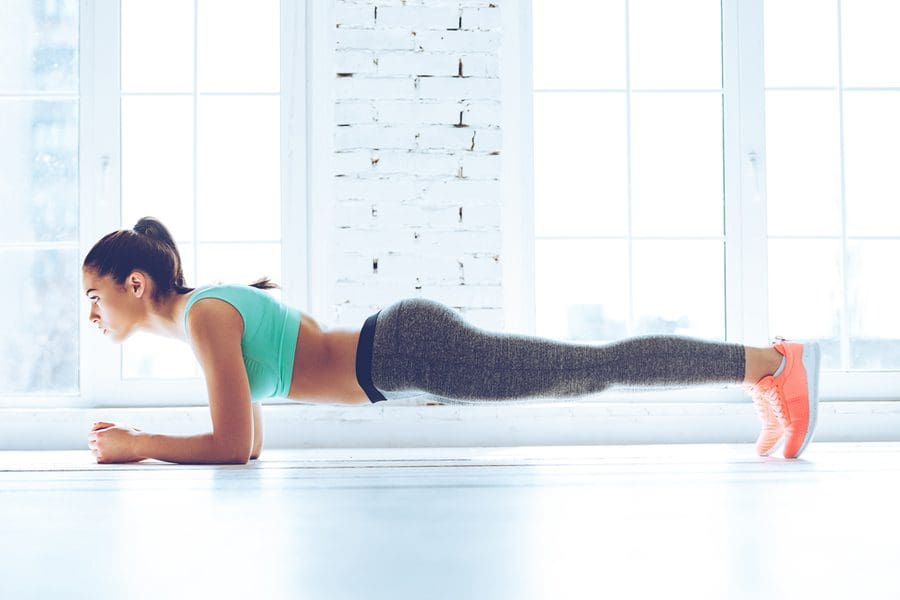Endless crunches targeted at spot training your stomach muscles won’t give you ripped abs. In fact, repeated sit-ups can potentially hurt your back and neck. That’s why trainers suggest you substitute full-body workouts that force you to use all 22 different muscles involved in the core area. Exercises that load the spine while keeping the back straight—planks, pushups, and squats into an overhead press—are great for stimulating the core. They also burn fat and calories overall.
But what about the burning sensation you feel after doing several sets of crunches? Doesn’t soreness mean you’re burning fat? Sorry, there’s no connection, trainers say. Muscles feel fatigued when exercise produces a buildup of H+ ions. The accumulation makes your blood more acidic and hinders the muscle’s ability to contract, but the sensation isn’t evidence that you’re building muscle.
It’s easy to get caught up in the drive for the hardest, flattest stomach on the beach but focusing on challenging your core is more important. Movements that increase your core strength can improve your posture and prevent the aches and pains of future back problems.
Keep your spine in neutral.
How, then, can you strengthen your abs and at the same time protect your spine? Don’t put yourself at risk for injury with moves that don’t work. Studies have shown the spine is not meant to be bent in half, repeated flexion can cause permanent damage.
Maintain a “neutral” spine that holds the natural curvature of your back while you do squats, deadlifts, overhead presses or lunges. Strengthen the core with exercises like planks, rollouts, bird dogs, and kettlebell carries. This will engage your core while strengthening your abs. It’s important to feel your core muscles squeeze when you move. That reflexive action means you’re working with enough resistance or intensity.
Think of the core as your entire body. Since everything is connected by fascial tissue, you can make any exercise a core move if you do it right. When you stand up and hold your arms out to the side, you’re performing a core move because you’re stabilizing your arms with your core.
Try a variety of core challenges.
Planks are go-to exercises that stimulate the core. Try different variations with the arms to stabilize the core in different ranges of motion. Resting on your forearms, with palms up, or elevating one hand are some of the ways you can mix it up with planks. Try side planks. Push-ups and Roman chairs will strengthen all parts of your core, while pretzel exercises target obliques and the side back. Don’t forget the C-Curl hold and lower back extensions.






